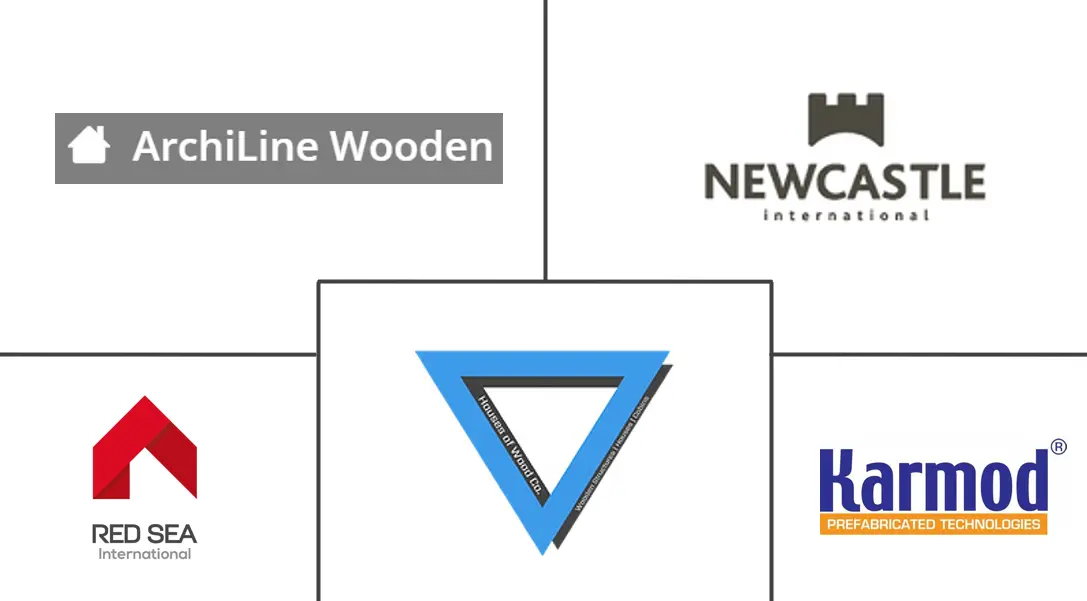UAE Prefab Wood Buildings Market Size and Share
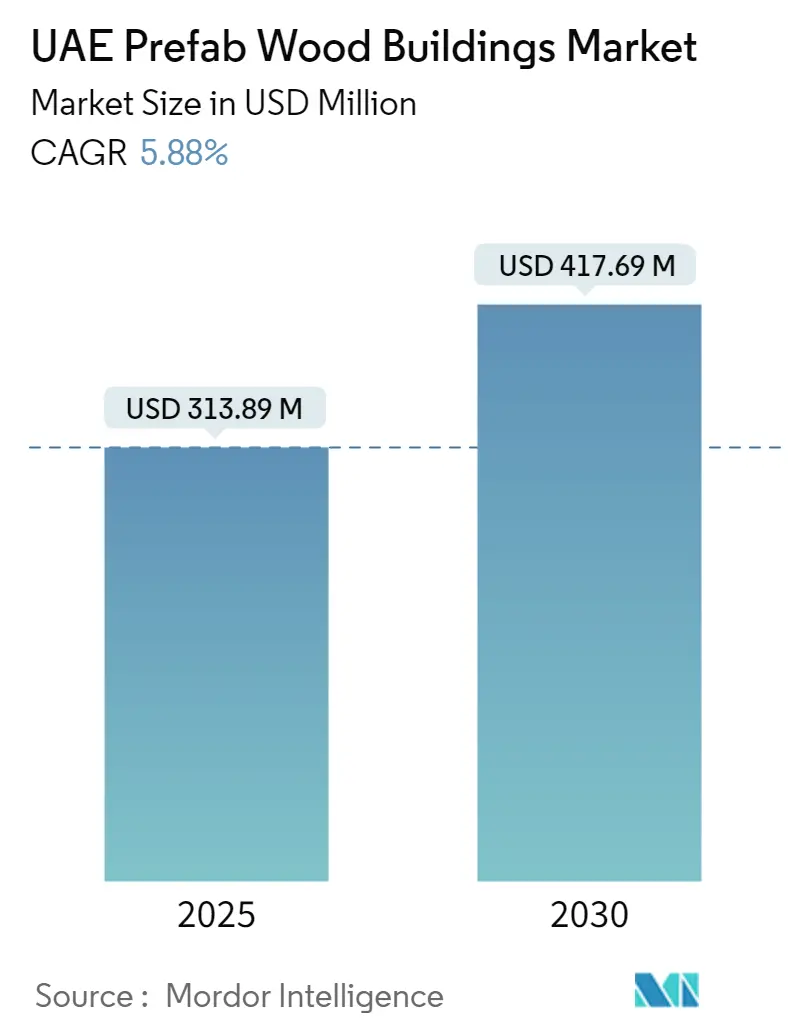
UAE Prefab Wood Buildings Market Analysis by Mordor Intelligence
The UAE Prefab Wood Buildings Market size is estimated at USD 313.89 million in 2025, and is expected to reach USD 417.69 million by 2030, at a CAGR of 5.88% during the forecast period (2025-2030).
The market is at its initial stages in UAE, so the only significant impact was experienced by the construction industry like construction delays, labor shortages, and supply chain disruption.
Several government initiatives, such as the Energy Strategy 2050, the Sheikh Zayed Housing Program, and the Dubai Tourism Strategy, are expected to support the growth of the construction sector in the UAE. Moreover, the government is also focusing on the development of smart cities, digitization of up to 1,000 government services, and installation of 2,000 Wi-Fi hotspots in the country. The liberal trade policies of the government are also attracting foreign investors, thereby propelling the growth of the construction market in the country. Over the last decade or so, the UAE has emerged as one of the most popular tourist destinations, and the country intends to keep it that way. For instance, in the commercial infrastructure space, Abu Dhabi is planning to attract almost 8 million tourists annually by 2030 under the Abu Dhabi Plan 2030. To serve the huge inflow of tourists, the government is planning to boost investment in the commercial infrastructure space from the short to medium-term perspective. Furthermore, the country is also hoping to expand its retail and office space to four million square meters by 2030. All of these factors are expected to support the growth of the commercial infrastructure sector in the UAE in the near term.
Moreover, nearly 160 hotel construction projects with more than 45,700 rooms are in the pipeline. This will subsequently assist the overall construction industry. The UAE construction market was valued at USD 101.45 billion in 2020 and is now expected to reach a value of USD 133.53 billion by 2026. With this tremendous growth of construction in the UAE, prefab buildings will experience an increased adoption considering their advantages over traditional construction like speed and low cost.
Prefabricated construction reduces construction time significantly. The modules can be quickly and efficiently fastened together on-site after most of the work is handled off-site. Contractors don’t have to worry about delays like weather or other unpredictable issues when choosing modular. Usually, modular construction can be completed in 6-8 weeks or less. Prefabricated construction cuts costs by having 90% of its manufacturing done in a controlled factory environment. There are many ways to reduce spending, such as using standard modules for building parts, avoiding harsh weather conditions, reducing labor time, and avoiding issues like labor shortages. Considering the advantages of wood over steel and concrete, prefab wood buildings may grow in popularity in the UAE. Wood is much lighter by volume than both concrete and steel; it is easy to work with and very adaptable on site. It is durable, results in less thermal bridging than its counterparts, and easily incorporates prefabricated elements. Its structural performance is very high, and its compressive strength is similar to that of concrete. Dubai government's USD 1.42 billion allocation in the budget for construction projects for the 2022-2024 period will have a positive impact on the wood and woodworking industry as demand for wood, timber, and wood products will increase, according to the president of the Organising Committee of the upcoming Dubai WoodShow. One of the major factors that could drive the prefab wood buildings market in UAE is the development of a general Construction Index in the country which aims to encourage the adoption of advanced methods of construction using prefabricated components to reduce the environmental impact of construction. However, wood buildings are more prone to fire. The high temperatures in UAE may make it difficult for the people in the country to adopt wood buildings. Also, wood buildings are prone to rapid deterioration compared to other types of prefab buildings. These facts could hamper the growth of the market.
UAE Prefab Wood Buildings Market Trends and Insights
Inclination Towards Sustainable Construction to Drive the Market Growth
Over the years, sustainable construction materials have been in great demand in the UAE. With the growth in awareness of responsible living and building a safe environment, the building construction industry has focused on encouraging the development of sustainable construction for healthy and environment-friendly living. Soon after Dubai Municipality introduced Green Building Regulations in 2011 for government constructions and later extended provisions to private buildings in 2014, the construction industry focused on adopting several ways to build sustainable constructions and create a healthy and environment-friendly atmosphere. The updated legislation, such as the Dubai Green Building Regulations and Specifications, has provided a much-needed foundation to encourage developers, contractors, and consultants to incorporate sustainability into their projects. These legislations may be expanded upon and updated in the future, in line with the Dubai 2020 Urban Master Plan and Dubai Integrated Energy Strategy 2030.
Recently, sustainable construction has caught the attention of key stakeholders in the wood and woodworking industry, and it appears that demand will only rise in the coming months, driven by market realities and other influences. Unlike other building materials like concrete and steel, wood is renewable. It can be grown and harvested multiple times. Wood waste products can be recycled and transformed into new products. Also, innovative designs can optimize the usage of materials to reduce waste. The manufacturing processes of steel and concrete release carbon dioxide into the environment, also transportation adds to the carbon emissions. The upcoming wood events in the region, like Dubai WoodShow, will focus on the sector and encourage further growth of sustainable building construction in the region, encourage responsible living, and ensure the development of a healthy and safe future environment for the future generation. This could drive the prefab wood buildings market growth in the UAE.
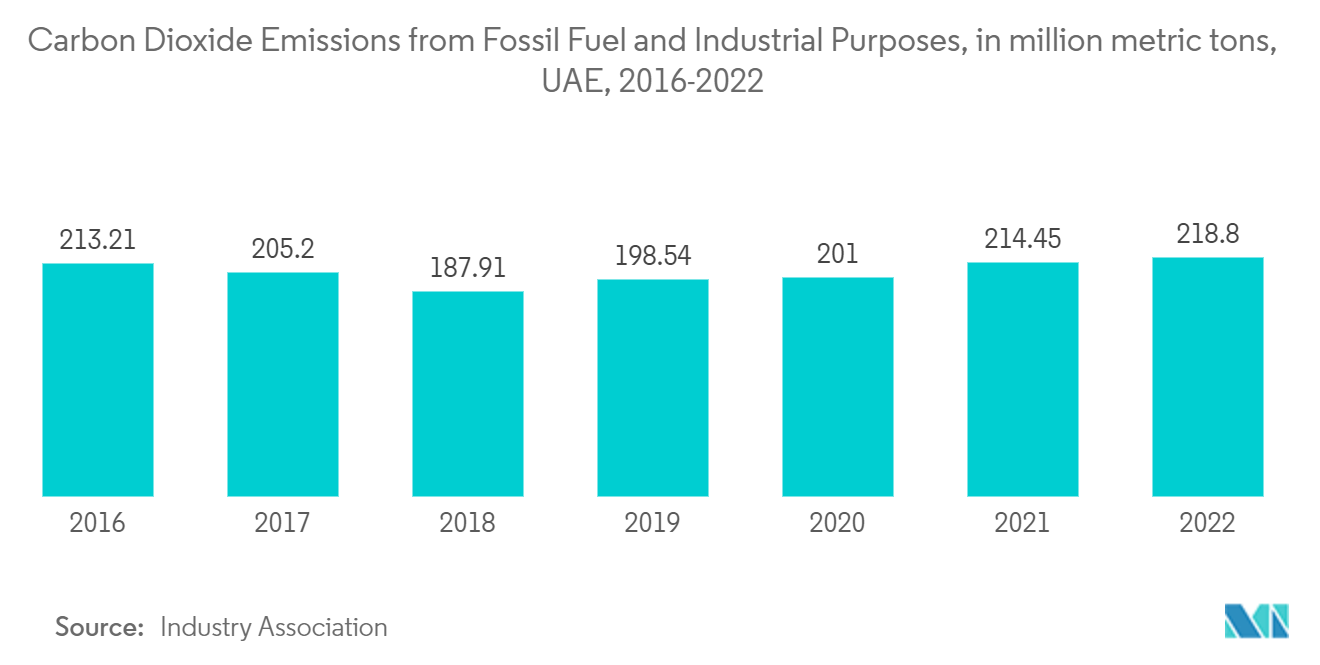
Popularity of Steel may Overshadow Wood Prefab Buildings
Initially, it looks like wood would be the cheaper option to construct a building. However, an increase in costs matches the surge in the market for prefabricated wood buildings. Some arguments say wood is sustainable, but with significant deforestation globally, this needs to be revised. Planting more forests has a positive environmental impact; with better air levels and the proper support, it could encourage both ethical uses of forests and maintain their sustainability. However, that is not quite happening at the moment. Most of the wood used in construction is softwood, mainly pine, cedar, redwood, and firs, which reach maturity fairly quickly. Hardwood, for example, teak and mahogany, is a lot more expensive and used mainly for furniture, veneers, and musical instruments. Unfortunately, the cost of all wood is rising.
Some would argue that steel is not as aesthetic as wood is in a building, but steel’s versatility in design is considerable. Another advantage of steel is that it can be recycled and used again. In addition, there is no waste with steel. Every little piece can find its place due to the precision taken with the design and fabrication of steel buildings. Another plus for steel is that it requires very minimal maintenance and has a considerable lifespan. However, steel production is energy-intensive, leaving a carbon footprint, which the steel industry is working very hard to reduce. Any wood buildings will have ongoing annual maintenance needs and require specialist treatments. Wooden buildings take a more extensive workforce to construct than steel, adding to the overall cost. Steel bolts together and can be installed at speed. Wooden houses are susceptible to fire.
On the other hand, steel is not combustible. The cost of materials for wood buildings is growing, and the ongoing expenses and building costs mount up, making the final price considerably higher. Steel is, therefore, the cheaper and more trustworthy material according to common industry perception. This could prove as a limitation for the adoption of prefab wood buildings in the UAE.
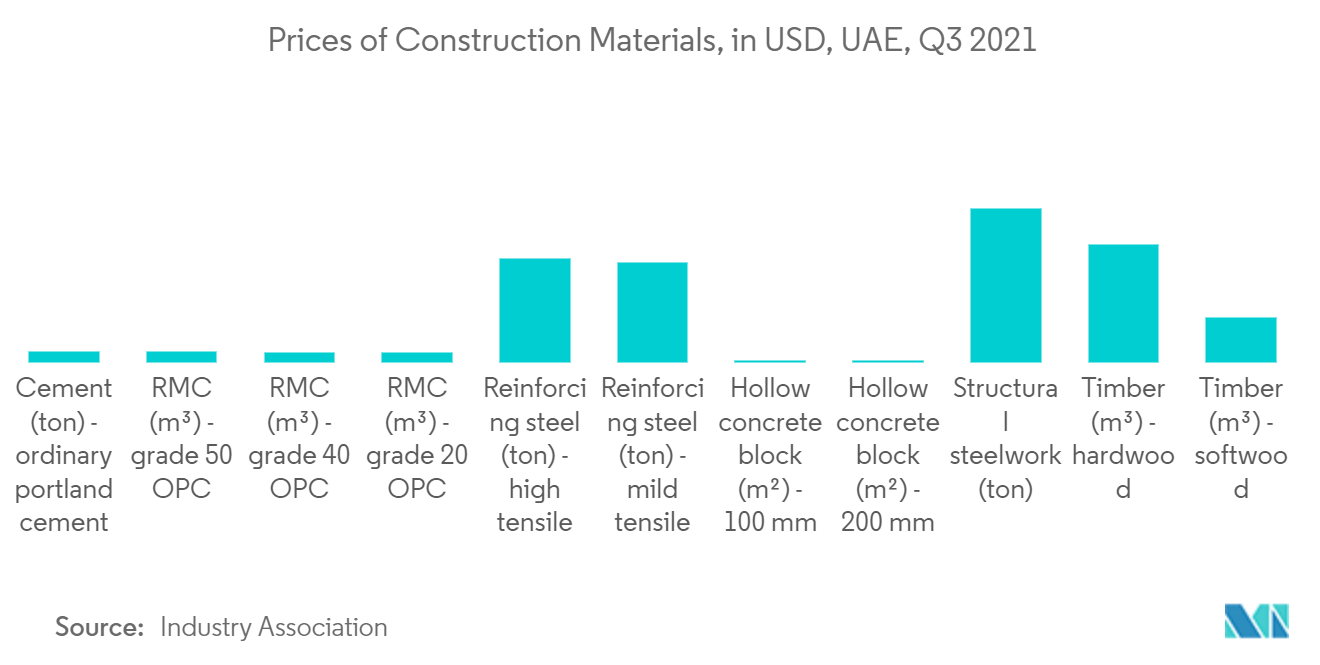
Competitive Landscape
The UAE prefab wood buildings market is fragmented in nature, considering that no company holds a significant market share. The prefab wood building market is at its very initial stages in the UAE. Some local and global players are operating in the market. There is low competition in the wood buildings sector as most companies focus on steel and concrete buildings, as the demand is such in the UAE. Some of the major players in the market include ArchiLine Wooden Houses, Newcastle Factory, Houses of Wood, Karmod Prefabricated Technologies, and Red Sea International.
UAE Prefab Wood Buildings Industry Leaders
-
ArchiLine Wooden Houses
-
Newcastle Factory
-
Houses of Wood
-
Karmod Prefabricated Technologies
-
Red Sea International
- *Disclaimer: Major Players sorted in no particular order
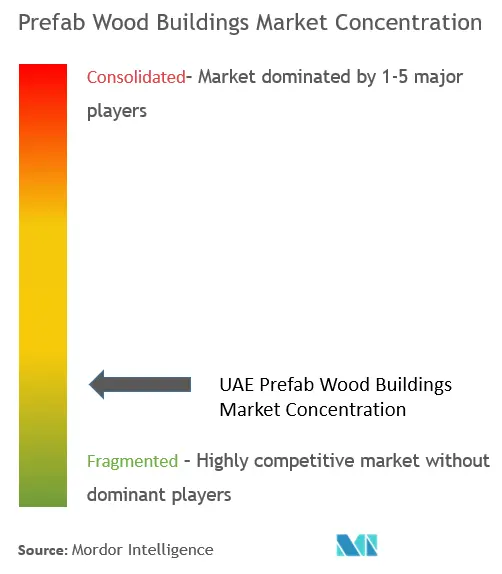
Recent Industry Developments
- March 2023: Marjan Group, UAE’s business conglomerate of UAE and a mega real estate company evinced keen interest in eco-friendly and sustainable Canadian Wood construction. CEO, Regional Sales Director, and Business Development Manager of Marjan Group visited the sustainable Canadian Wood Project in MAK BTR at Hyderabad to understand the novel and pioneering initiative of MAK Projects. The expertise of MAK Projects in sustainable wooden housing is impressive, and the construction is aesthetically appealing; therefore, the group sees a great opportunity to collaborate.
UAE Prefab Wood Buildings Market Report Scope
Any building that contains significant sections built off-site, in a factory, and then assembled on-site is called a prefabricated or prefab building. In some cases, distinct portions of a structure may be prefabricated; in other cases, nearly all the components may be factory-built. Wood’s versatility, lighter weight, and ease of working with make it well-suited to prefabricated construction methods. Thus, prefab buildings using wood as a primary material are known as prefab wood buildings. Such buildings are generally constructed using one of two approaches: as a kit-of-parts or as an assembly of finished modules.
The UAE prefab wood buildings market is segmented by application (Commercial, Residential, and other applications). The report offers market sizes and forecasts for all the above segments in value (USD).
| Commercial |
| Residential |
| Other Applications |
| By Application | Commercial |
| Residential | |
| Other Applications |
Key Questions Answered in the Report
How big is the UAE Prefab Wood Buildings Market?
The UAE Prefab Wood Buildings Market size is expected to reach USD 313.89 million in 2025 and grow at a CAGR of 5.88% to reach USD 417.69 million by 2030.
What is the current UAE Prefab Wood Buildings Market size?
In 2025, the UAE Prefab Wood Buildings Market size is expected to reach USD 313.89 million.
Who are the key players in UAE Prefab Wood Buildings Market?
ArchiLine Wooden Houses, Newcastle Factory, Houses of Wood, Karmod Prefabricated Technologies and Red Sea International are the major companies operating in the UAE Prefab Wood Buildings Market.
What years does this UAE Prefab Wood Buildings Market cover, and what was the market size in 2024?
In 2024, the UAE Prefab Wood Buildings Market size was estimated at USD 295.43 million. The report covers the UAE Prefab Wood Buildings Market historical market size for years: 2020, 2021, 2022, 2023 and 2024. The report also forecasts the UAE Prefab Wood Buildings Market size for years: 2025, 2026, 2027, 2028, 2029 and 2030.
Page last updated on:
UAE Prefab Wood Buildings Market Report
Statistics for the 2025 UAE Prefab Wood Buildings market share, size and revenue growth rate, created by Mordor Intelligence™ Industry Reports. UAE Prefab Wood Buildings analysis includes a market forecast outlook for 2025 to 2030 and historical overview. Get a sample of this industry analysis as a free report PDF download.
